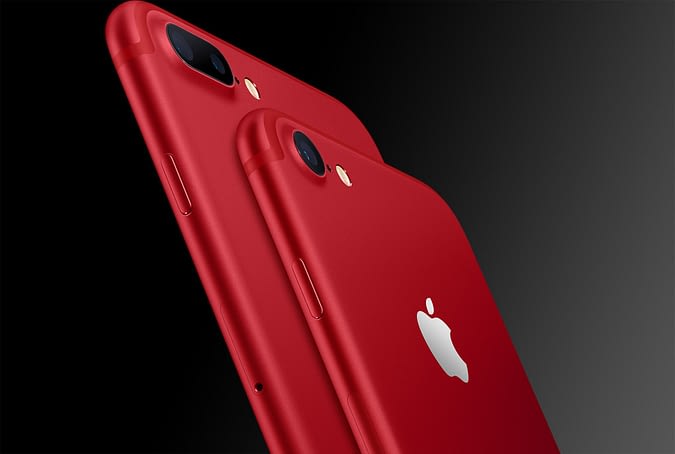Apple on March 21, 2017 added new iPhone 7 and iPhone 7 Plus models to its smartphone lineup.
Apple announced a brand new version of its iPhone 7 and iPhone 7 Plus. While the iPhone maker has offered special product red cases for the iPhone previously, this is the first time the actual handset is available in red itself.
The new Product (RED) iPhone features a red aluminum finish, and is launching as part of Apple’s partnership with (RED).
Apple once again focused its mid-cycle iPhone refresh on adding a new color to its flagship iPhone lineup, but this time around it’s an entirely new color that has never before been seen on an iPhone: Red.
“The introduction of this special edition iPhone in a gorgeous red finish is our biggest (PRODUCT) RED offering to date in celebration of our partnership with (RED), and we can’t wait to get it into customers’ hands,”
says Apple CEO Tim Cook.
Apple’s partnership with (RED) involves highlighting the AIDS fundraising campaign with red-themed designs for products and apps. Apple recently turned its App Store and associated top apps the color red for the world AIDS day.
Apple’s new Product Red iPhone 7 and iPhone 7 Plus models are identical to the new iPhones released in September 2016 in every way except for the color, which is a glossy red.This is now the third brand new color Apple has introduced during this iPhone cycle. Space Gray was eliminated from Apple’s flagship iPhone lineup last year, paving the way for new matte black and “Jet Black” color options.
Apple’s last color change to its iPhone lineup involved a new glossy jet black finish for the iPhone 7, and before that the company also introduced the rose gold option with the iPhone 6S. Today’s red option is perhaps the most striking of all the colors available for the iPhone 7 and 7 Plus, and it will be available in 128 GB and 256 GB models.
Apple’s new red iPhone 7 and iPhone 7 Plus are available to order from Apple’s online store and they’re priced in line with the rest of Apple’s iPhone 7 and iPhone 7 Plus lineup.


















